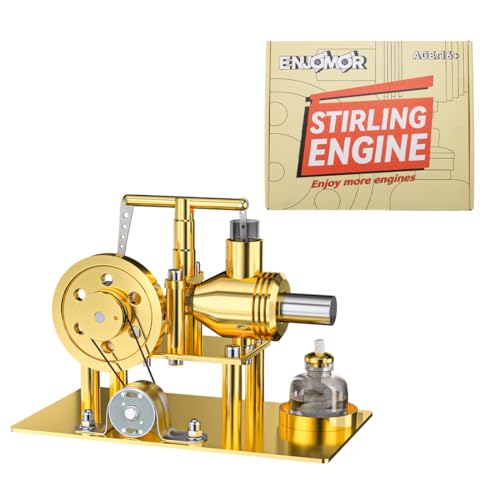- Joined
- Dec 31, 2010
- Messages
- 822
- Reaction score
- 220
Just a couple of notes on your testing.
First off thanks for the results.
A conventional ignition circuit requires a high wattage ballast resistor in series with the coil. Usually a couple of ohms or so to limit the current. A full sized car coil by itself is only a few tenths of an ohm and on 12v you could have at least 24amp pulses trying to be produced by your supply. (~ 12v /0.5 ohms). Probably more. For that reason a power supply is not usually a good thing to test with.
Having said that - you can THANK your power supply for saving your coil, the driver circuit and probably your wiring. Had you been using a good battery you might have smoked it up (with no ballast resistor).
You mentioned a few posts ago that you thought your point closed time (dwell time) on your "old iron" engine was REALLY REALLY long. A full sized coil and even the small model coils never require more than 20ms to be fully saturated. Any more time energizing it than that and you're just wasting power heating the coil, the ballast resistor and the driver transistor and stressing your points (on a standard ignition). Also killing your battery prematurely. This is where the 20ms came from in the original timing values. No point in powering the coil any longer than it takes to saturate it. Your just wasting power.
So if you want my opinion you should spend some time looking at adjusting your points dwell (closed time) to 20ms (or so) at cranking / idle speed for a low revving engine. It's probably just a screw on the points set.
Yes that time will become less as the engine speeds up but a full sized coil will produce a good spark at less than 1ms dwell time.
The forgoing are all typical values and user results may vary. But this is why ignition circuits are different on different cars - because manufacturers choose values that work for their coil, expected rpm, etc. etc.
Using the ignition circuit was not intended to be "plug and play". Some pre-work needs to be done to tailor your trigger signal for the intended usage.
i.e. points adjustment, magnet size, expected rpm etc etc.
BTW. The capacitor size vs time values you came up with from your testing are pretty close to expected. As I mentioned in another post I expected 5x the capacitance would give you 5x the time. Given component tolerances that's pretty much what you got. (18ms for 1 uf and about 90ms for 5us). Give or take.
Sage
First off thanks for the results.
A conventional ignition circuit requires a high wattage ballast resistor in series with the coil. Usually a couple of ohms or so to limit the current. A full sized car coil by itself is only a few tenths of an ohm and on 12v you could have at least 24amp pulses trying to be produced by your supply. (~ 12v /0.5 ohms). Probably more. For that reason a power supply is not usually a good thing to test with.
Having said that - you can THANK your power supply for saving your coil, the driver circuit and probably your wiring. Had you been using a good battery you might have smoked it up (with no ballast resistor).
You mentioned a few posts ago that you thought your point closed time (dwell time) on your "old iron" engine was REALLY REALLY long. A full sized coil and even the small model coils never require more than 20ms to be fully saturated. Any more time energizing it than that and you're just wasting power heating the coil, the ballast resistor and the driver transistor and stressing your points (on a standard ignition). Also killing your battery prematurely. This is where the 20ms came from in the original timing values. No point in powering the coil any longer than it takes to saturate it. Your just wasting power.
So if you want my opinion you should spend some time looking at adjusting your points dwell (closed time) to 20ms (or so) at cranking / idle speed for a low revving engine. It's probably just a screw on the points set.
Yes that time will become less as the engine speeds up but a full sized coil will produce a good spark at less than 1ms dwell time.
The forgoing are all typical values and user results may vary. But this is why ignition circuits are different on different cars - because manufacturers choose values that work for their coil, expected rpm, etc. etc.
Using the ignition circuit was not intended to be "plug and play". Some pre-work needs to be done to tailor your trigger signal for the intended usage.
i.e. points adjustment, magnet size, expected rpm etc etc.
BTW. The capacitor size vs time values you came up with from your testing are pretty close to expected. As I mentioned in another post I expected 5x the capacitance would give you 5x the time. Given component tolerances that's pretty much what you got. (18ms for 1 uf and about 90ms for 5us). Give or take.
Sage





















![MeshMagic 3D Free 3D Modeling Software [Download]](https://m.media-amazon.com/images/I/B1U+p8ewjGS._SL500_.png)




![Learning AutoCAD Civil 3D 2014 [Online Code]](https://m.media-amazon.com/images/I/51F3yi9fokL._SL500_.jpg)





![DreamPlan Home Design and Landscaping Software Free for Windows [PC Download]](https://m.media-amazon.com/images/I/51kvZH2dVLL._SL500_.jpg)



































